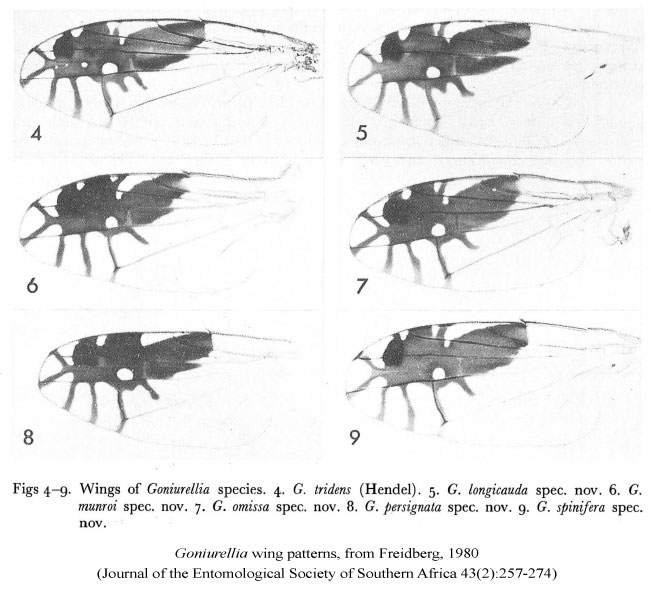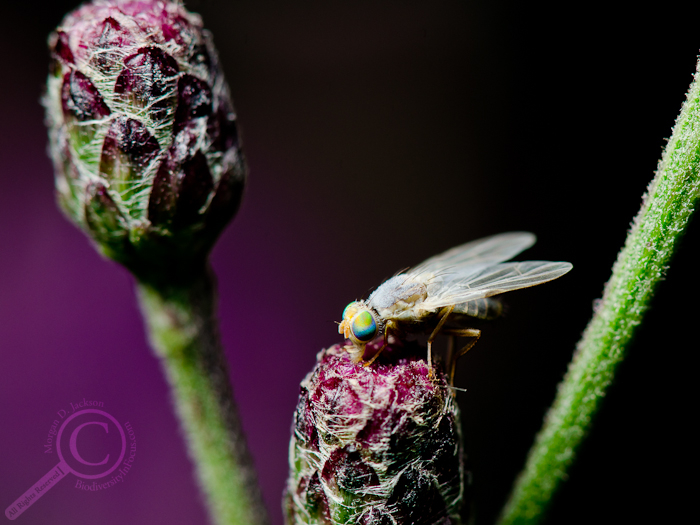Fruit fly wings with ant picture
Nov062013
45 Responses to “Ants, spiders, or wishful thinking?”
Comments (28)Pingbacks (17)
Fruit Fly with wings of ant picture
Of all the resplendent beauties in the insect kingdom, few might look to the humble fruit fly for its delicacy or charm.
But a closer examination of the transparent wings of Goniurellia tridens reveals a piece of evolutionary art. Each wing carries a precisely detailed image of an ant-like insect, complete with six legs, two antennae, a head, thorax and tapered abdomen.
"The image on the wing is absolutely perfect," says Dr Brigitte Howarth, the fly specialist at Zayed University who first discovered G tridens in the UAE.
It is a member of tephritidae, a family - there are two - of 5,000 species of fruit flies whose colourful markings have earned them the name "peacock flies".
In the UAE alone, 27 picture wing species are known. Some have wings bearing simple shapes but others, like G tridens, are far more complex.
Dr Howarth first saw G tridens on an oleander shrub in northern Oman. "I was looking at the stem of the leaves and I noticed that there were some insects crawling around. When I sort of honed in I started to notice what I thought was a couple of ants moving around."
At first she suspected an infestation on the fly's wings. "But it was so symmetrical that I thought, 'oh this is not possible'. When I got it under the microscope I realised that these were insects painted onto the wings."
In contrast to its wings and brilliant green eyes, the fly's body is a dull greenish grey - "almost cryptically coloured," says Dr Howarth - that blends into the leaves where it is found.
When threatened, the fly flashes its wings to give the appearance of ants walking back and forth. The predator gets confused and the fly zips off.
This defence mechanism may also make the fly attractive to potential mates - something that is less of a concern for the average housefly.
"A lot of flies, if a male sees a female that is suitable it just flies up and tries to latch on," said Dr Howarth. But G tridens has an altogether more amorous courtship, showing off its wings in a colourful dance. And Dr Howarth believes it is no exception.
"If you look at the behaviour, it tells you a lot about the functionality," said Dr Howarth. "Not everybody gets to mate. The ones that do have something about them that make them more attractive.
"Is it the same in other invertebrates, who knows? It's very possible that those are in fact for courtship behaviour."
This elaborate behaviour may be a response to the fly's restrictive environment. "Something that can survive anywhere doesn't need to have as many protection factors," said Dr Howarth.
The more realistic the picture on the wing, the better its chance of survival and reproduction.
"It's all about optimising your possibilities of survival. There's always variety and some individuals, for whatever reason, have more of a success because of that variation."
G tridens's looks have served it well. Since it was identified in 1910, it has been found in the Near and Middle East, India, and central Asia.
Females lay eggs in plant tissue, like fruits and flowers, where the larvae feed. This does not usually harm the plant but many fruit flies are still considered pests.
Whether a pest or a flying piece of art, it is around us every day.
"I would say most people that have sat in their gardens with a cool orange juice or water in their hand in the early morning sun and looked down at the ground would have seen a picture-wing fly."













“You’re assuming it is only possible for us to falsely recognize images.”… no he isn’t, he’s just accumulating sensible opposing views and pointing out that the people are too quick to accept what they have been told from a viral image without thinking about the theory.